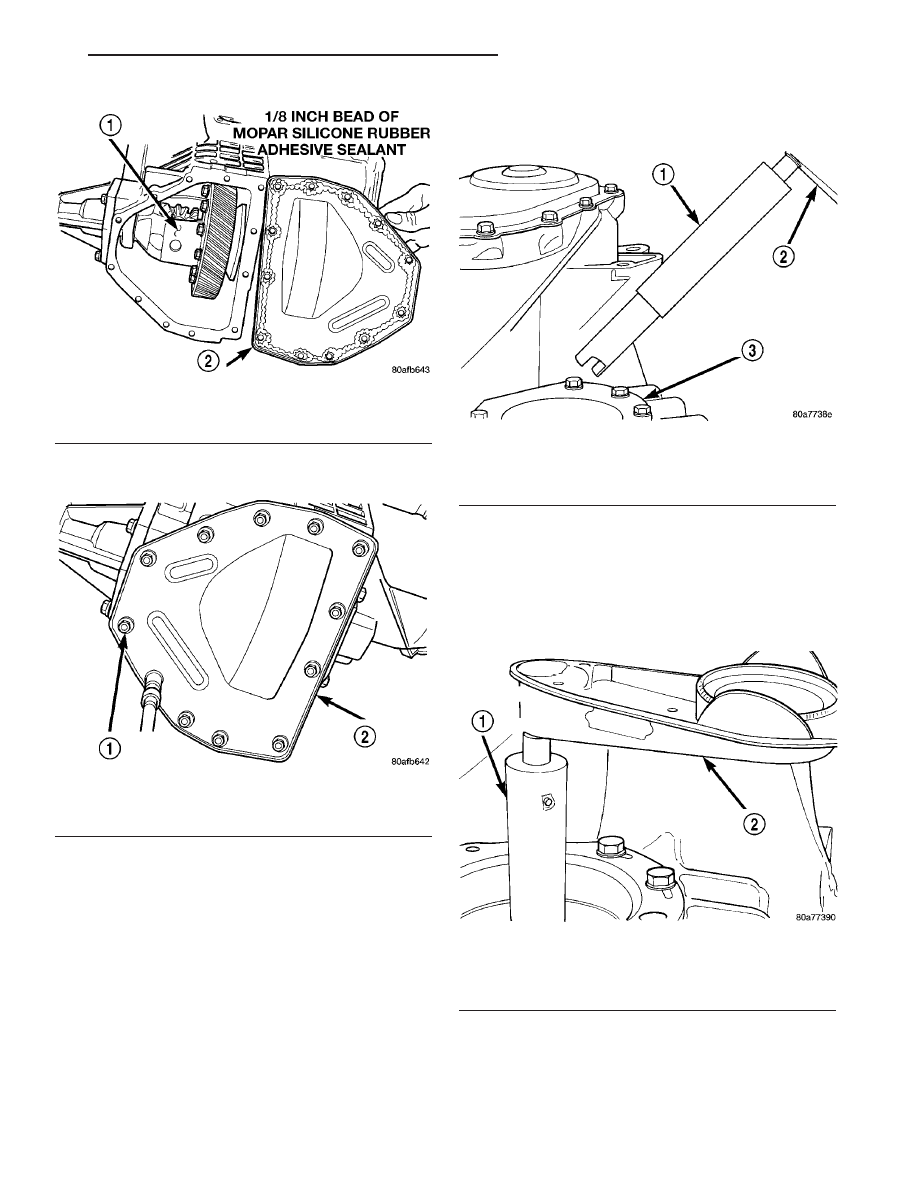Chrysler Pacifica. Manual - part 777

(18) Install and torque cover-to-case bolts to 19
N·m (165 in. lbs.) (Fig. 246).
ADJUSTMENTS
ADJUSTMENT - DIFFERENTIAL BEARING
PRELOAD
NOTE: Perform all differential bearing preload mea-
surements
with
the
transfer
shaft
and
gear
removed.
DIFFERENTIAL BEARING PRELOAD ADJUSTMENT
USING EXISTING SHIM
(1) Position the transaxle assembly vertically on
the support stand, differential bearing retainer side
up.
(2) Install Tool L-4436A into the differential and
onto the pinion mate shaft (Fig. 247).
(3) Rotate the differential at least one full revolu-
tion to ensure the tapered roller bearings are fully
seated.
(4) Using Tool L-4436A and an inch-pound torque
wrench, check the turning torque of the differential
(Fig.
248).
The
turning
torque
should
be
between 5 and 18 inch-pounds.
(5) If the turning torque is within specifications,
remove tools. Setup is complete.
(6) If turning torque is not within specifications
proceed with the following steps.
Fig. 245 Install Differential Cover
1 - DIFFERENTIAL ASSEMBLY
2 - DIFFERENTIAL COVER
Fig. 246 Differential Cover Bolts
1 - DIFFERENTIAL COVER BOLTS
2 - DIFFERENTIAL COVER
Fig. 247 Tool L-4436 and Torque Wrench
1 - SPECIAL TOOL L-4436–A
2 - TORQUE WRENCH
3 - DIFFERENTIAL BEARING RETAINER
Fig. 248 Checking Differential Bearings Turning
Torque
1 - SPECIAL TOOL L-4436–A
2 - TORQUE WRENCH
CS
41AE/TE AUTOMATIC TRANSAXLE
21 - 103
FINAL DRIVE (Continued)